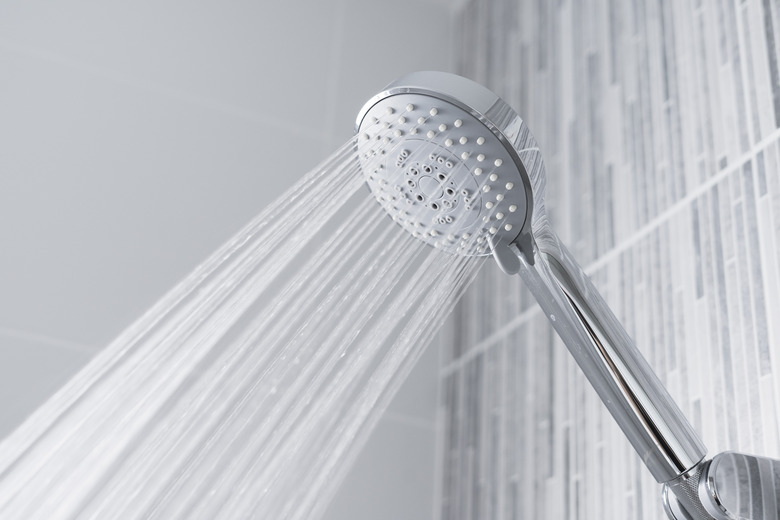How To Clean A Shower Diverter Valve
We may receive a commission on purchases made from links.
As Mr. Rooter Plumbing explains, the shower diverter valve is the piece of hardware that allows water flow to switch between the bath faucet and the showerhead. When the valve isn't working correctly, water will flow from both outlets.
When it's plugged, the water pressure of the shower will decrease substantially. Depending on the design of the shower, the diverter valve might be a valve between the hot and cold water faucets, a pull-up knob on one of the faucets or it might be a separate valve in the line between the showerhead and the tub faucet.
Troubleshooting a Shower Diverter Valve
Troubleshooting a Shower Diverter
Valve
Mineral deposits from the water can build up inside the valve's mechanism, introducing leaks or making the valve stick and catch in place. There are a number of things that can be tried before fully disassembling the diverter valve to clean it.
If the diverter valve seems to be sticking, or stuck, try using a cooking spray or diverter lube (like WD-40 Ez-Reach) to loosen it up. Press and depress the diverter valve a few times, then spray an oil-based cooking spray onto the plunger where visible. Pump the diverter valve a few more times. This lubricant can help get into stuck parts and provide enough slickness to get them moving again. Cooking spray is organic and safe for use.
If the diverter valve is a part of the faucet, soaking and cleaning the faucet is another good step. Soaking the faucet in white vinegar and using a plastic bag and rubber bands to keep the faucet in place can help to release built-up minerals which may be preventing the valve from working.
Other Shower Diverter Repairs
Other Shower Diverter Repairs
If this doesn't work or if the valve isn't easily soaked by this method, try removing the spout. Most faucets connect to the wall in one of three ways: using screws, threaded pipe or popping on and off of another piece of pipe. Be sure that the water has been turned off to the bathroom.
Carefully remove the spout and examine the interior for visible buildup, which can be removed with a toothbrush. Then, let the entire faucet soak in a vinegar-water solution for up to a couple of days. This should remove most of the buildup within the faucet.
Disassembling the Diverter Valve
Disassembling the Diverter Valve
If none of these techniques solve the problem, then it's time to disassemble the diverter valve and look for internal buildup and damage. Depending on where the diverter valve exists in this particular shower model, this may have already been done in the previous step. Check information on the make and model of your tub online to be sure you understand the hardware in use. Not all diverter valves are placed on the spout, so you may need to remove and clean other hardware as well.
Shut off the water to the bathroom, then use the proper tools to remove the diverter valve. These can normally be disassembled with a screwdriver and a pair of wrenches. Once opened, check the internal pieces for buildup or damage.
Replacing Diverter Parts
Replacing Diverter Parts
Parts that are worn can be replaced using basic parts from any hardware store. Visible buildup can be removed with a toothbrush or sandpaper, preferably after applying a vinegar soak to these parts. Reassemble the diverter valve and reinstall.
If all else fails, most diverter valves can be easily replaced following a quick trip to a hardware store. In order to prevent excessive buildup, it's important to keep incoming water as balanced and free from trace minerals as possible.
